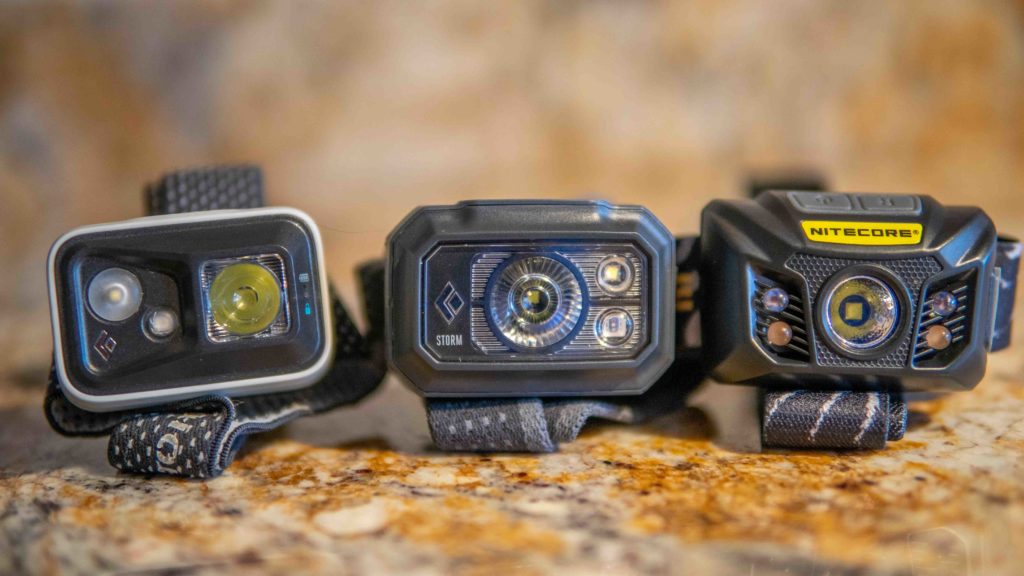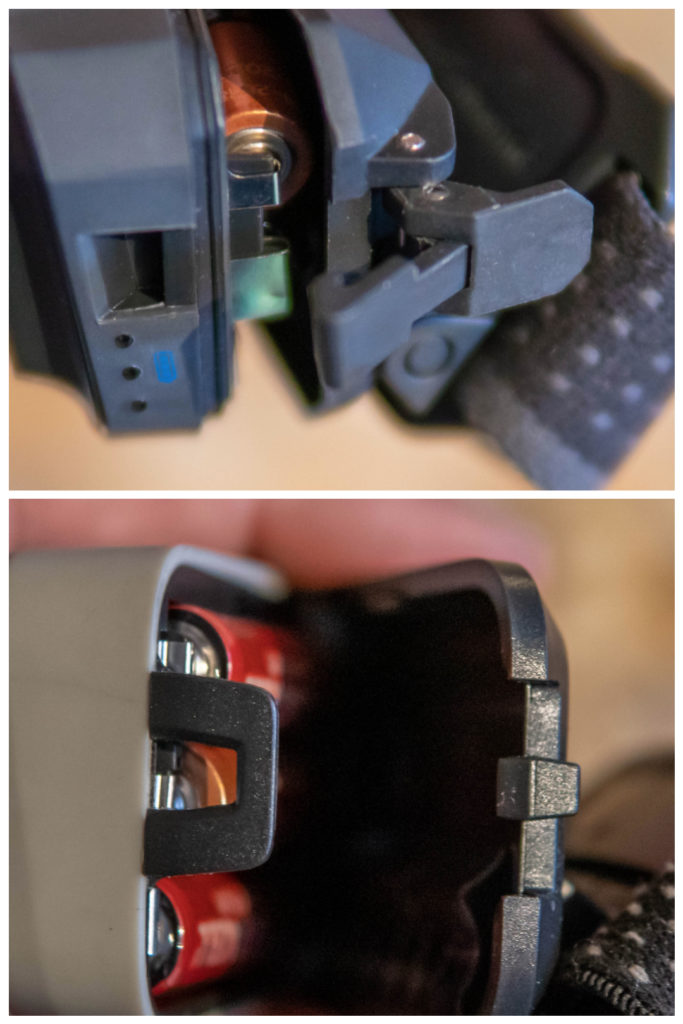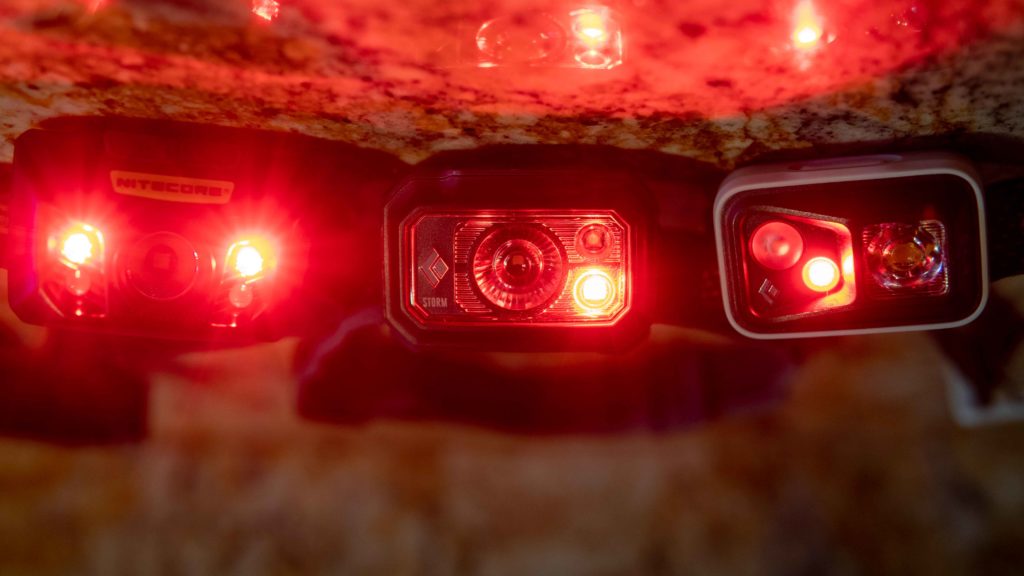When a sailor progress to sailing through the night a headlamp becomes essential gear. If you’re not there yet, I want to encourage you to get into sailing after dark because there is no better place to watch the sunset than from a sailboat underway! This article tells you which headlamp you should buy and why it’s the best choice for sailing on the market.
The Black Diamond Storm
I’ve used the Black Diamond Storm (affiliate link) as my primary headlamp since shortly after it was released. The current model is waterproof, can be used in night vision saving red mode without cycling through white, is impressively bright in red and white mode as well as having a good battery life. Mine is more than 2 years old and is on the fritz and I’ll be ordering another for next season.
2 year old gear being on the fritz is my first gripe with the Storm: durability in the saltwater environment. I’ll be on my 3rd in 5 years (first bought January 2015). The electrical components become unreliable and ultimately fail for my usage which is regular use on spray covered decks. They fail with very little warning; these days I always carry a backup headlamp.
My other gripe is that even carefully controlling the storm will eventually result in you losing your carefully preserved night vision to it’s bright white, blue or green lights. I wish it had a second button dedicated to the red LED so it was impossible to accidentally wind up in the wrong mode if you’re pressing the right button!
The Black Diamond Spot
I wanted the Black Diamond Spot (affiliate link), the nearly identical little brother to the Black Diamond Storm, to come out on top. It doesn’t have the green or blue lights which means the controls are simpler. It’s smaller and cheaper than the Storm with all the features I need.
But the Storm remains the winner because the red light on the Storm is brighter than the red on the Spot. Not just a little brighter, the Storm’s red light is functionally brighter than the Spot; jobs I’m able to see just fine using the Storm’s red mode (including some sail trimming) are jobs I need to turn the white mode on when I’m using the Spot. Having the brighter red light makes me a more capable sailor at night, not on deck and below, so I’m sticking with the Storm for now.

Criteria for Consideration
This was hardly an exhaustive evaluation of the headlamps on the market. So here are some criteria you can use for your own headlamp evaluation if you think the Spot or the Storm aren’t for you:
Red Light without Cycling Through Other Colors
If you can’t activate red, night vision preserving, light without cycling through other colors the headlamp is not suitable for night sailing use. The more reliably you activate and deactivate red only mode without accidentally activating another color the more suitable the headlamp is for night sailing use.
“Waterproof”
The first feature sailors look for in a headlamp is waterproof-ness. Saltwater is particularly tough on electronics with batteries inside so keeping the water out is doubly important if you’re a saltwater sailor.
IP Ratings are Misleading
Be weary of IP ratings. You’ll see headlamps labeled with IP code ratings such as IPX7 and IPX8. You might surmise that IPX8 is more waterproof than IPX7. Unfortunately that isn’t the case; here are the IP rating summaries from Wikipedia (my emphasis added):
- IPX6:
- Water projected in powerful jets (12.5 mm nozzle) against the enclosure from any direction shall have no harmful effects.
- IPX7:
- Ingress of water in harmful quantity shall not be possible when the enclosure is immersed in water under defined conditions of pressure and time (up to 1 m of submersion).
- IPX8:
- The equipment is suitable for continuous immersion in water under conditions which shall be specified by the manufacturer. However, with certain types of equipment, it can mean that water can enter but only in such a manner that it produces no harmful effects. The test depth and duration is expected to be greater than the requirements for IPx7, and other environmental effects may be added, such as temperature cycling before immersion.
I’ve found that IPX67 is best for sailing. IPX67 generally does not allow water ingress due to spray or immersion in water up to 1 meter. In my experience these headlamps are gasketed such that water can’t get into the battery compartment.
All the IPX8 headlamps I’ve seen were such that spray could get into the battery compartment and when that water is salt water you get some nasty battery corrosion. I detest the idea of a battery corroding and leaking acid right above my eyes…
Red Brightness Matters More
Headlamps usually list their output in terms of brightness in the brightest setting of white light mode. I’ve never been on deck and encountered a white light, mine or another sailor’s, that wasn’t sufficiently bright. I often use the Spot and the Storm with the white brightness reduced at night.
The red brightness is more important for deck work at night. I’ve definitely seen sailors using headlamps where the brightness of the red light was insufficient to see what they were doing with their hands, literally an arms length away.
The Spot has OK red light brightness. The Storm has great red light brightness and consistency across it’s wide field of view; the quality of the red light is the main reason I favor the Storm over the Spot.
Rechargeable Batteries
I replace the batteries in my headlamps more frequently than any other device I own so buying rechargable batteries (affiliate link) was an easy call. An extra set of AAA batteries combined with a USB to AAA/AA battery charger and 12V to USB adapter 12V socket to USB adapter (affiliate links) means I’ve always got power for my headlamp that I can swap in mid watch if necessary.
In theory a headlamp with a built in rechargeable battery can be lighter, more powerful and more water-tight. Lithium Ion technology still hasn’t made it to rechargeable, removable batteries and not having a battery port that opens means less opportunity for water ingress.
The downside is that if the battery runs out at night you’re without a headlamp while it charges down below. I always bring a backup headlamp anyway so that’s not a deal breaker for me but it may be for you.
I bought a Nightcore NU32 (affiliate link) which was recommended to me by a sailing friend. It’s a rechargeable Lithium Ion powered, IPX67 headlamp that has a separate button to control the red light. I’m hoping it can dethrone the Storm, I’ll follow up after using it a bit next season.
Get a Spotlight as Well
Misleading headlamp beam distance claims aside, for picking out aids (unlit navigation buoys) and obstacles (such as lobster pots) off the boat at night really calls for a spotlight. When I’m captaining I make sure there is a powerful spotlight aboard. I’ve come to trust this 1300 Lumen West Marine Rechargeable Spotlight: this spotlight has helped me avoid many a lobster pot at navigate some tricky unlit channels at night.
I’m currently trying out this Dewalt DCL043 Spotlight (affiliate link) because it’s compatible with the swappable, rechargeable lithium ion batteries that power the cordless tools I own. I’ve had it on a few overnights it’s definitely gotten the job done but I’m not ready to make a definitive conclusion yet.
Have experiences with the Black Diamond Storm or Black Diamond Spot? Let me know how they’ve treated you in the comments below. If you have a favorite headlamp for sailing that you’d recommend definitely feel free to share. I’ll definitely update this article when I have conclusions about the Nightcore NU32.
See you out there!


I’m interested to buy at waterproof headlamp
I’m interested to buy waterproof headlamps
For sailing, you should review/consider https://exposurelights.com/raw-pro-head-torch
Red is a must at night, and few do it well.
I actually purchased one over the winter and just started using it sailing last week. I will update when I have more time using it.
Do you have one? Any thoughts or tips?